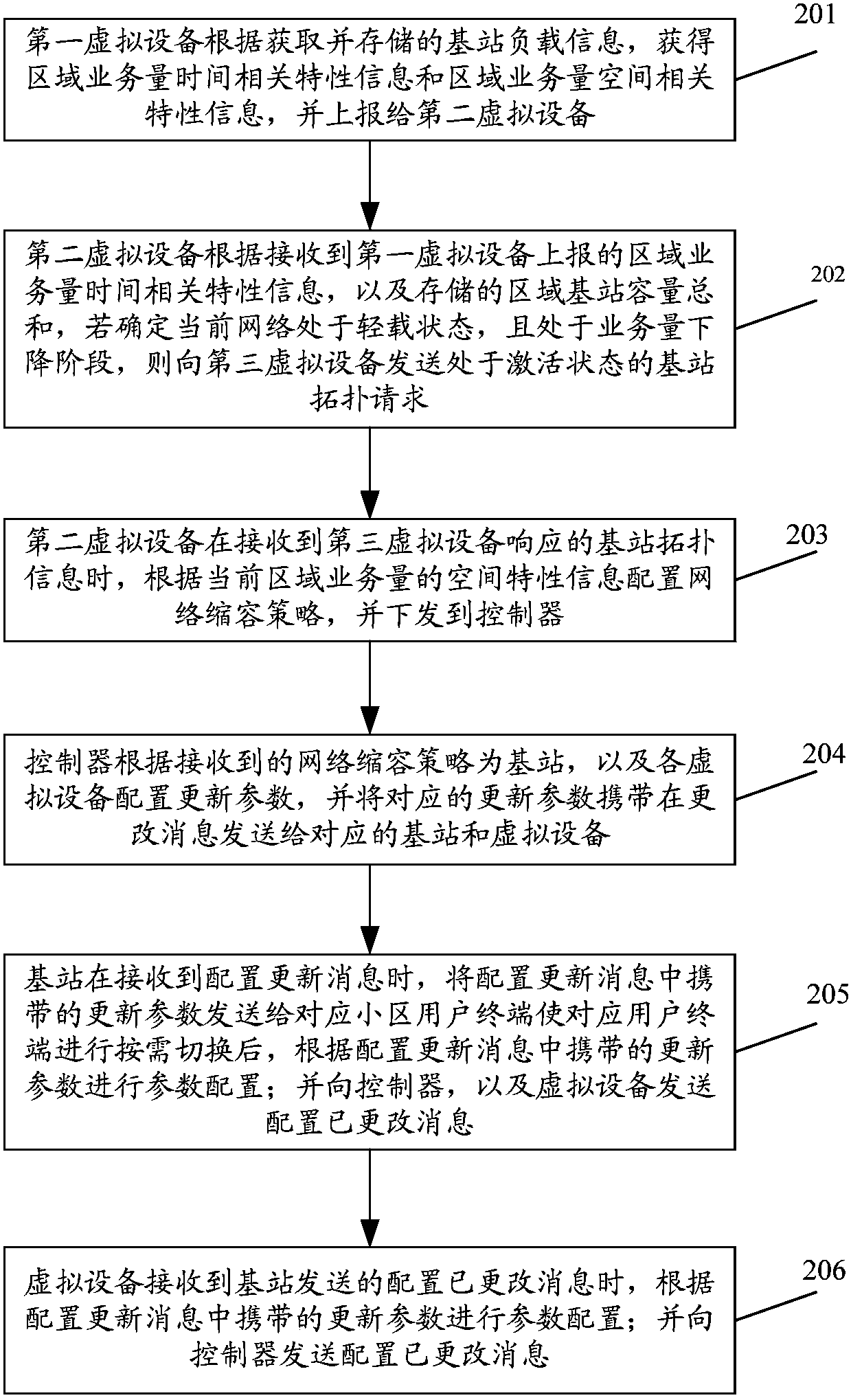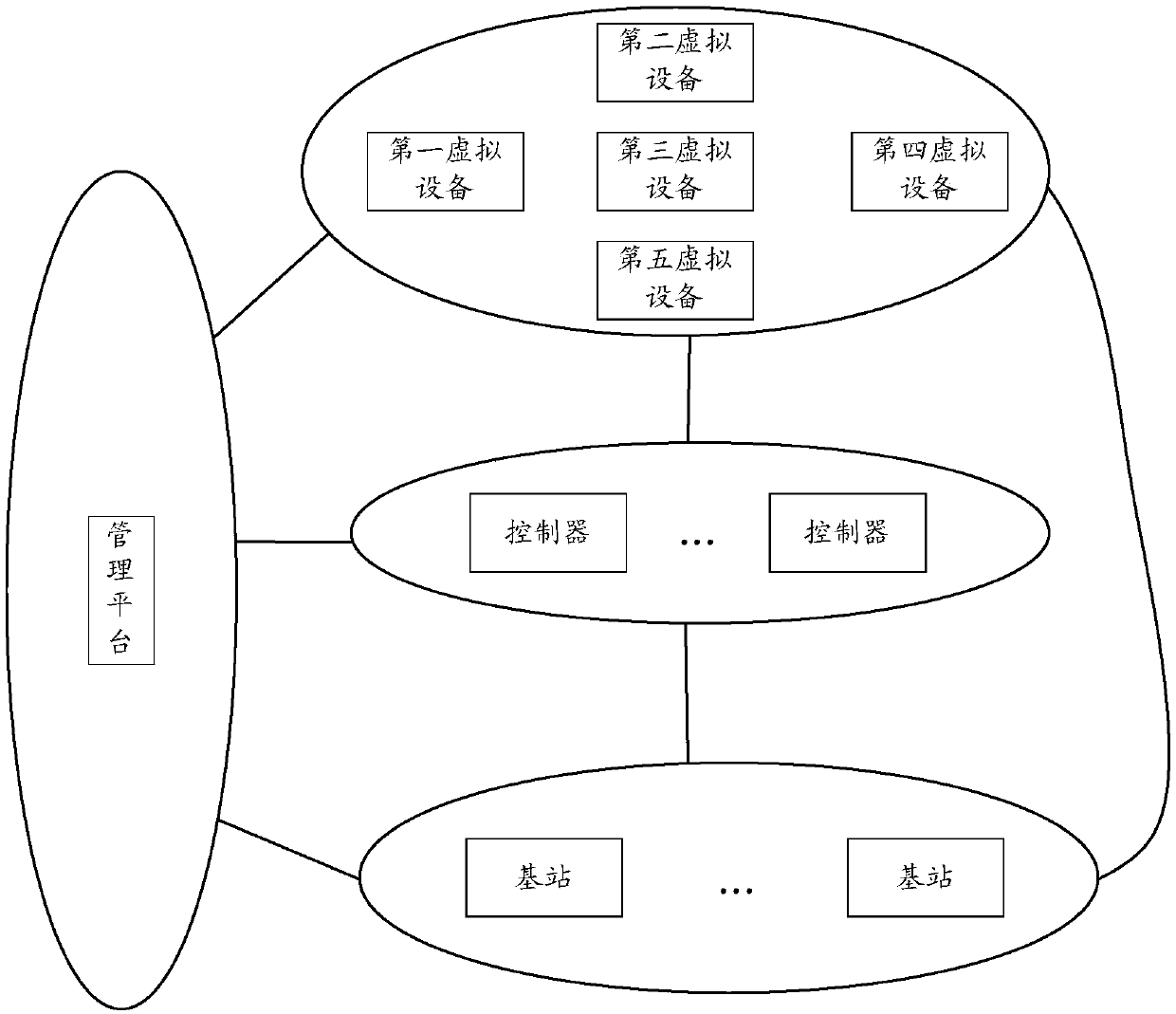A Method of Energy Saving Based on Virtual Network
A network and virtual device technology, applied in the energy-saving field based on virtual network, can solve problems such as energy waste, high energy consumption, and low energy efficiency, and achieve the effect of improving overall performance
- Summary
- Abstract
- Description
- Claims
- Application Information
AI Technical Summary
Problems solved by technology
Method used
Image
Examples
Embodiment 1
[0045] see figure 1 ,figure 1 It is a schematic flowchart of realizing energy saving based on a virtual network in Embodiment 1 of the present application. The specific steps are:
[0046] Step 101 , the first virtual device obtains time-related characteristic information of regional traffic and space-related characteristic information of regional traffic according to the acquired and stored base station load information, and reports the information to the second virtual device.
[0047] Step 102: The second virtual device sends a message to the third virtual device if it determines that the current network is in an overloaded state according to the time-related characteristic information of regional traffic reported by the first virtual device and the acquired and stored regional base station capacity. Base station topology request.
[0048] The process for the second virtual device to determine whether the current network is in a light-load state or a heavy-load state acco...
Embodiment 2
[0065] see figure 2 , figure 2 It is a schematic flowchart of realizing energy saving based on virtual network in Embodiment 2 of the present application. The specific steps are:
[0066] In step 201, the first virtual device obtains time-related characteristic information of regional traffic and space-related characteristic information of regional traffic according to the acquired and stored base station load information, and reports the information to the second virtual device.
[0067] In step 202, the second virtual device determines that the current network is in a light-loaded state and the traffic is declining, according to the time-related characteristic information of regional traffic reported by the first virtual device and the stored capacity of regional base stations. The third virtual device sends a base station topology request in an activated state.
[0068] If it is determined that the current network is in a light-load state and the traffic volume is incr...
PUM
 Login to View More
Login to View More Abstract
Description
Claims
Application Information
 Login to View More
Login to View More - R&D
- Intellectual Property
- Life Sciences
- Materials
- Tech Scout
- Unparalleled Data Quality
- Higher Quality Content
- 60% Fewer Hallucinations
Browse by: Latest US Patents, China's latest patents, Technical Efficacy Thesaurus, Application Domain, Technology Topic, Popular Technical Reports.
© 2025 PatSnap. All rights reserved.Legal|Privacy policy|Modern Slavery Act Transparency Statement|Sitemap|About US| Contact US: help@patsnap.com



